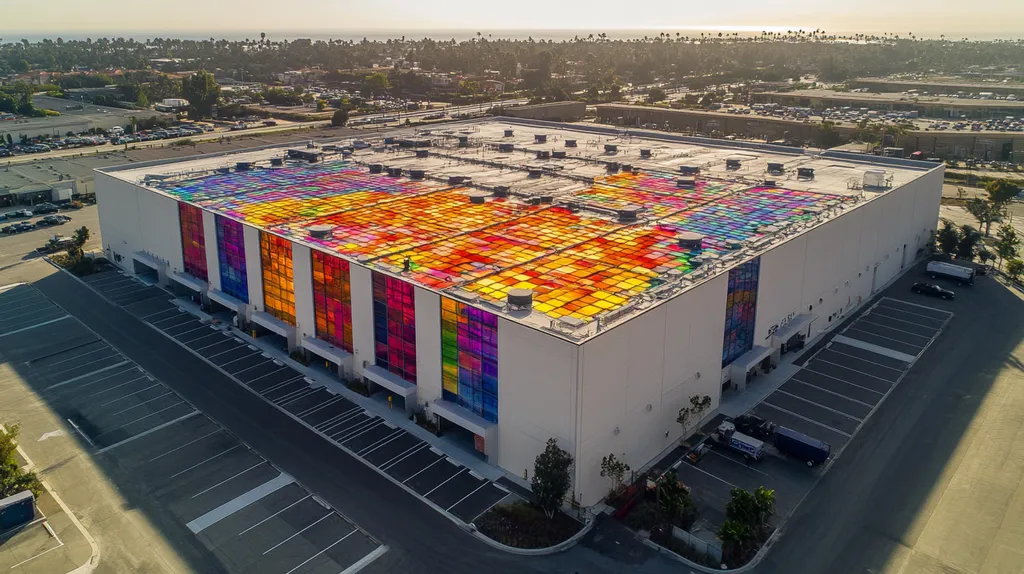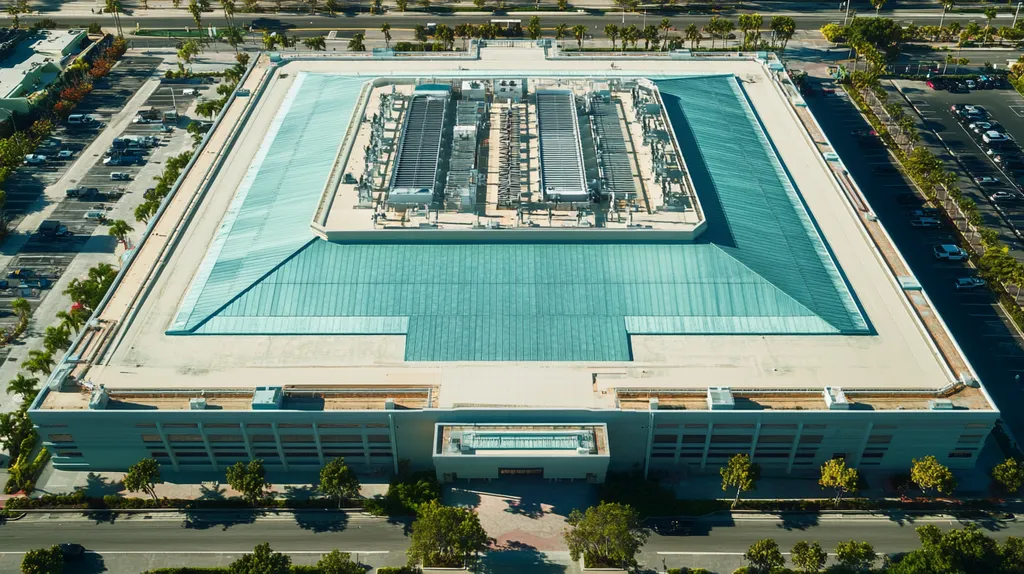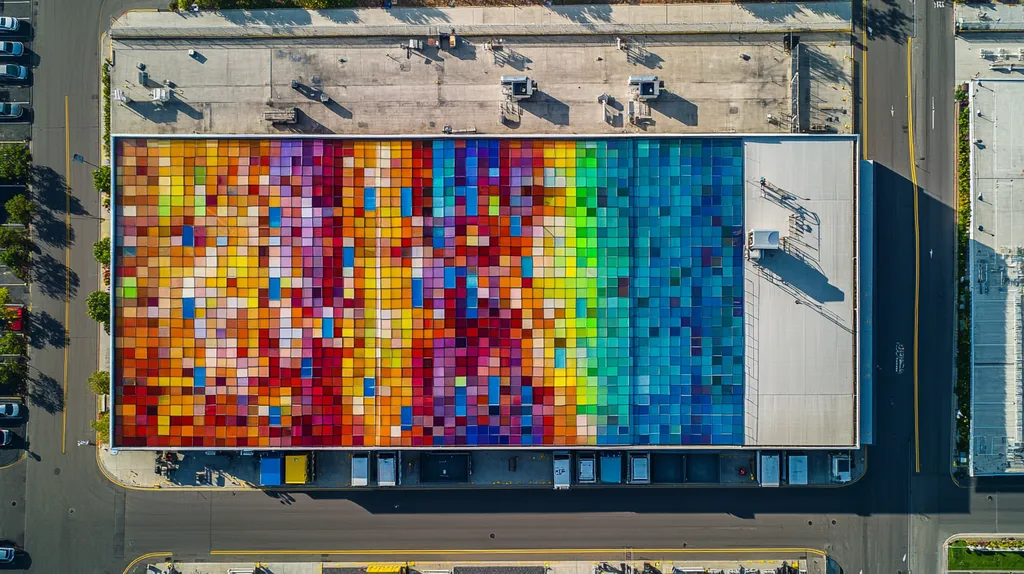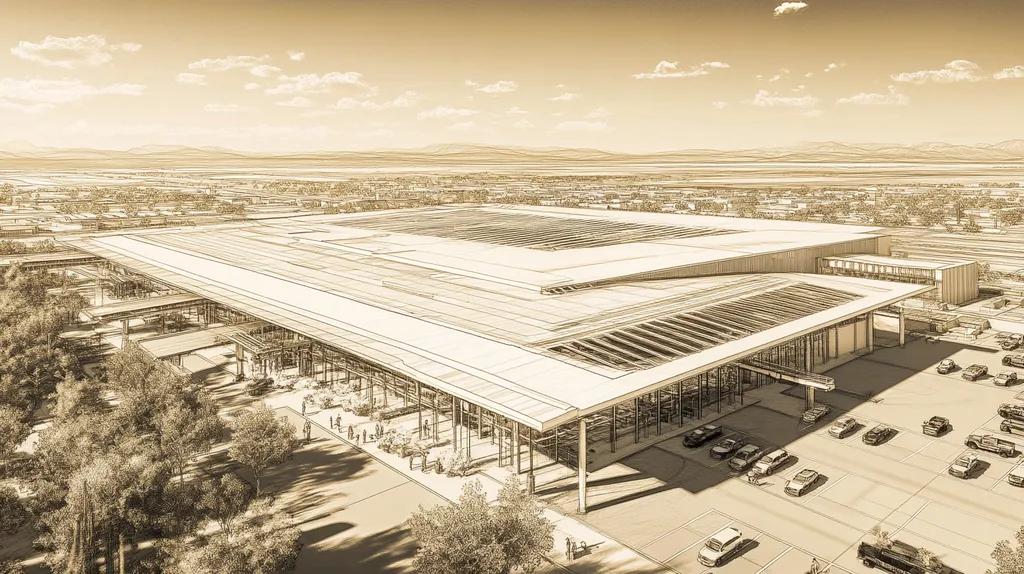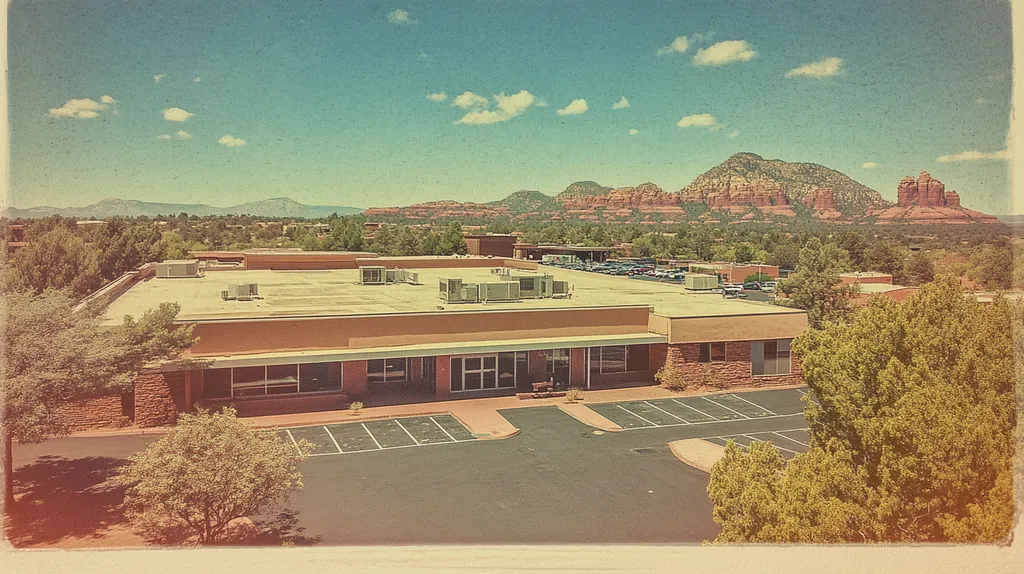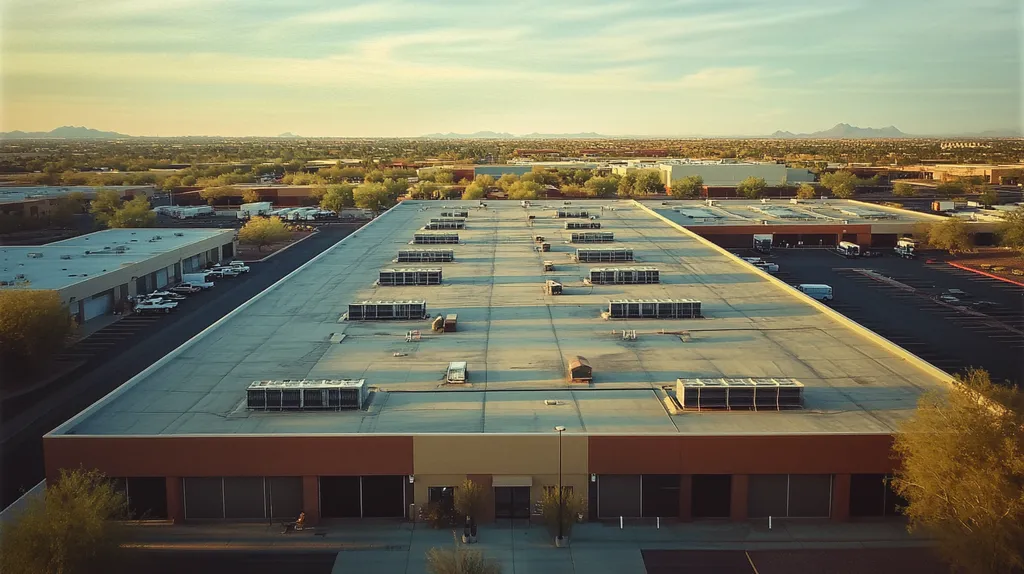In an era where extreme weather events are becoming the norm, understanding past climate patterns isn’t just smart—it’s survival for commercial properties. Studies show that 40% of premature roof failures stem directly from misaligned weather considerations, costing building owners millions in repairs annually.
From scorching heat waves to unprecedented rainfall, yesterday’s weather data shapes tomorrow’s roofing decisions. Yet many facility managers still rely on outdated assumptions rather than hard climate data when selecting roofing systems.
This comprehensive guide breaks down how historical weather patterns influence commercial roofing choices, helping property owners navigate material selection, maintenance scheduling, and long-term planning for maximum roof performance.
SECTION 1: THE BASICS EXPLAINED
In the world of commercial roofing, past weather patterns aren’t just trivia; they’re the backbone of your roofing strategy. With the risk of escalating repair costs and the stress of premature roof failures lurking around every corner, ignoring historical weather trends is a gamble no property owner can afford. Did you know that roofs in regions with heavy snowfall face a whopping 30% higher risk of leaks if they’re not designed with that snowfall in mind? This section will guide you through understanding weather patterns, their significance for your building, and how they shape your roofing choices.
What It Is (In Plain Language)
Weather patterns are basically the trends that dictate what the weather usually looks like in a given area over time. This includes everything from temperature averages and rainfall amounts to how often storms whip through town. When it comes to your roof, these patterns are crucial—they dictate what materials and designs are best suited for the climate. For instance, a building nestled in a rainy area will need a vastly different roofing approach than one sitting in a sunbaked desert.
Grasping these weather patterns allows property owners and facility managers to foresee potential roofing problems. By diving into historical weather data, it becomes clear which materials will stand the test of time under specific conditions. Some roofing systems are formulated to withstand high winds, while others are built to handle the painful thermal expansion that occurs in extreme temperatures.
This kind of knowledge isn’t just helpful—it’s essential for keeping your building safe and sound. Analyzing historical weather data can guide managers in selecting roofs that are tailor-made for local climates, ensuring durability and efficiency. Neglecting this insight could mean shelling out cash for more frequent repairs, ultimately putting a dent in your bottom line.
In short, a solid grasp of your area’s weather patterns lays the groundwork for making roofing choices that fit your building’s needs and location, paving the way for long-term success.
Why It Matters (To Your Building)
The consequences of weather patterns reach far beyond how appealing your roof looks; they’re directly tied to your building’s functionality and lifespan. For example, if a roof has to endure frequent rain without adequate drainage, it’s going to wear out faster, leading to structural issues and mounting maintenance costs. Studies show that roofs constructed without regard to local weather conditions can fail up to five years earlier than anticipated.
Moreover, the decisions you make regarding roofing based on climate can affect energy efficiency too. Roofs designed to reflect sunlight in hot climates can lead to significant savings on cooling costs. In contrast, traditional roofing materials in snow-heavy regions might leave building managers facing unexpected heating expenses during chilly months.
Insurance is another critical angle to consider. Commercial buildings that need regular roof repairs because they overlook weather considerations may find themselves paying higher premiums. Insurers often scrutinize a property’s history of weather-related claims, which can limit future coverage options.
Adopting a forward-thinking approach to roofing can minimize risks while boosting your asset’s value over time. By acknowledging weather’s role in roofing, property owners can ensure their buildings are robust, energy-efficient, and capable of weathering environmental challenges without breaking the bank.
How It Works
Understanding the way weather influences roofing materials begins with a robust analysis of data. Meteorological insights help identify trends in rainfall, snowfall, temperature, and wind speeds for a particular region. Armed with this data, property managers can make sound decisions that resonate with local conditions.
Manufacturers tailor roofing materials for specific climates. For instance, UV-resistant coatings are a must-have in sun-drenched areas, while insulated systems are the go-to in regions battling extreme temperatures. Each roofing option is essentially a response to specific weather patterns and their anticipated effects over time.
The installation of these roofs also takes local conditions into account. Proper slope and drainage systems are designed according to local rainfall averages, keeping water pooling at bay—because standing water on a roof is about as useful as a chocolate teapot. In windy regions, roofs get additional fastening for reinforcement against storms.
Ultimately, weaving weather patterns into roofing decisions ensures that both design and material choices are up for the long haul. This smart approach not only boosts durability but also enhances performance and slashes overall lifecycle costs.
SECTION 2: PRACTICAL APPLICATIONS
The stakes of integrating past weather patterns into roofing decisions are high. Property owners who overlook historical data risk severe consequences, like costly repairs and failed roofs. For instance, a region with a history of intense storms or prolonged droughts demands a careful reevaluation of roofing choices. Recognizing these patterns isn’t just smart; it’s essential for promoting longevity and curbing future repair costs.
Common Uses & Examples
Leveraging historical weather data is vital to maximize the lifespan of commercial roofs. In regions where heavy snowfall is the norm, opting for roofing systems that can handle extra weight must be a top priority. On the flip side, areas with sweltering heat might find that reflective roofing materials significantly cut cooling costs.
Take the example of a manufacturing facility located in a coastal zone with a track record of hurricane activity. By selecting a reinforced membrane roof specifically designed for high winds, they lowered their risk and minimized operational disruptions during storms.
In rainy regions, flat roofs should come equipped with effective drainage systems to prevent water build-up. Coupling these systems with moisture-resistant materials offers an added layer of protection against leaks and pesky mold.
In essence, applying historical weather insights to roofing solutions makes for customized choices that ensure greater durability and top-notch performance.
When You Need It Most
Identifying the right moments to apply historical weather trends is crucial for preventive maintenance. Spring, notorious for heavy rainfall, is the prime season for property managers to check drainage systems for clogs before issues arise. Including rainfall data in routine inspections ensures roofs can stand strong against leaks.
Additionally, property owners in colder climates should assess insulation and sealing before winter. Harsh winter conditions often lead to the formation of ice dams, and addressing this risk ahead of time can help preserve the roof’s integrity.
As severe weather events become more common, integrating weather forecasts into maintenance plans is not just wise; it’s essential. Allocating resources for regular inspections, based on anticipated weather, can save significant amounts by avoiding emergency repairs.
The timing of roof assessments can markedly influence overall performance and durability.
Interactions With Other Systems
Roofs don’t operate in isolation; they interact closely with various building systems, magnifying the implications of weather-informed decisions. An efficient roofing system needs to harmonize with HVAC units, drainage solutions, and insulation. For instance, having a roof that enhances energy efficiency can lead to improved HVAC performance during those uncomfortable temperature swings.
Moreover, a roof’s materials can either enhance or hinder the overall energy strategy of a facility. Reflective roofing can minimize heat absorption, leading to decreased cooling costs. By analyzing historical temperature data, property owners can select materials that complement their energy objectives.
Understanding how roof drainage systems operate in tandem with structural components is also essential. A well-crafted roof can prevent water backup, especially in storm-prone areas, thus protecting adjacent systems.
Collaboration between roofing and other building systems ensures a cohesive approach to facility management, enhancing both longevity and efficiency.
SECTION 3: KEY TERMINOLOGY DECODED
Navigating the maze of roofing terminology is essential for making well-informed decisions. Property owners and facility managers often hit roadblocks due to confusing industry jargon. Terms like “R-value” and “thermal bridging” can remain undefined, leading to costly mistakes. This section clears up essential roofing terminology, shedding light on how past weather patterns influence roofing systems.
Essential Terms Explained
The roofing industry has its own lingo, and knowing it can make or break effective communication. For starters, “insulation” is anything that keeps your heated air in, while “underlayment” is the protective shield lurking beneath your roof materials. Understanding these terms is key to figuring out how a roof will hold up against specific weather conditions.
Don’t overlook the term “drainage” systems, which channel that pesky rainwater away from the roof. If drainage flunks its job, standing water can wreak havoc, threatening the roof’s integrity. With this knowledge, it’s easier to anticipate potential issues before they rain on your parade—literally.
Finally, understanding “life cycle cost” is a game-changer, as it evaluates not just the upfront price of shingles but all the long-term expenses tied to maintenance and repairs. Making the right investment is only possible when you comprehend the full picture.
Industry Jargon Translated
Industry jargon can be a minefield for anyone not in the roofing profession. The term “cool roofs” is a prime example; it refers to roofing materials that reflect sunlight and absorb less heat. This knowledge becomes invaluable when discussing energy efficiency and cutting costs in hot climates.
Another term that requires untangling is “thermal performance,” which gauges a roofing material’s ability to resist heat flow. This metric is particularly significant when selecting materials suitable for scorching summer temperatures that can drain your budget.
Let’s not forget “vapor barriers,” the unsung heroes that prevent moisture accumulation in roofing systems. Understanding vapor barriers is crucial, especially in humid areas where excess moisture can spell disaster.
By translating this industry jargon into plain language, property owners position themselves to make roofing choices that align with their local weather patterns, ensuring superior performance.
Measurement & Units Simplified
Getting familiar with the measurements and units commonly used in roofing can significantly influence decision-making. For example, “square” measures 100 square feet, and knowing this helps accurately estimate the materials needed for your roofing project.
The “R-value” is another crucial unit that measures how effectively insulation works. Higher R-values signify better insulation. This is particularly vital for properties in colder climates where insulation becomes essential for energy savings.
“Pitch” refers to how steep a roof is, impacting how effectively snow and water are shed. Grasping how pitch affects drainage can prevent serious structural issues during adverse weather.
Finally, terms like “warranties” often come with specific lingo such as “length of coverage” and “transference options.” Understanding these terms enables property owners to evaluate the long-term protection their investments receive against various weather conditions. This knowledge can safeguard your assets from unpredictable nature’s whims.
SECTION 4: DECISION FACTORS
In the game of commercial roofing, decision factors are the critical moves property owners and facility managers need to get right. With climate volatility on the rise, the consequences of misguided choices can be severe. For instance, research reveals that 40% of roofing failures stem from poor material selection influenced by past weather phenomena. Understanding cost implications, performance trade-offs, and durability factors can make the difference between a roof that stands strong and one that succumbs to the elements.
Cost Considerations
Budget is often the biggest driver when choosing roofing materials, but diving for the cheapest option can lead to painful regrets down the line. Sure, a bargain roof might save you a few bucks now, but it could crumble under pressure, leading to skyrocketing repair bills later.
Opting for higher-quality materials is an investment that pays dividends over time. While they hit your wallet harder at first, these robust options can handle severe weather, slashing maintenance needs. Just consider the toll of a single hailstorm—suddenly, that cheap roof looks like an expensive mistake.
Energy efficiency further complicates the cost equation. Not only does a well-designed roof trim heating and cooling costs, but those savings add up over the long haul. While initial costs matter, it’s the total cost of ownership that should dictate your purchase.
In short, property managers must think long-term. A smart, informed investment today can save considerable financial heartache tomorrow.
Performance Trade-offs
Choosing a roofing system isn’t just about picking pretty colors or trendy materials; performance is a heavyweight contender in the decision ring. Not all roofing options deliver the same benefits. Some materials boast incredible durability but might falter under extreme stress, while others excel in flexibility but are less resistant to harsh conditions.
For example, single-ply membranes are popular due to their excellent weight-to-performance ratio. However, those lightweight champions can take a beating from high winds and heavy snow, compromising their effectiveness when it matters most. Recognizing these trade-offs can steer property managers toward smarter decisions.
Performance also hinges on how roofing materials respond to thermal cycling. A roof that thrives in a temperate climate could struggle against the temperature extremes of another region. Referencing historical weather patterns helps managers make better-informed choices tailored to their specific climate realities.
Ultimately, weighing performance trade-offs against past weather data leads to roofing decisions that stand the test of time, keeping both functionality and durability in check.
Lifespan & Durability Factors
The longevity and robustness of roofing materials are not just footnotes in facility planning—they’re vital statistics. Property owners often underestimate how significantly past weather patterns affect a roof’s lifespan. For instance, regions that get a high dose of UV radiation require more resilient materials tailored to withstand deterioration.
Different materials, like TPO and EPDM, have varying lifespans further influenced by their performance in specific climates. EPDM, for instance, shines in stable conditions, making it a go-to in areas with fluctuating temperatures. Choosing the right material is not just about what looks good but about what will endure.
Warranty information from manufacturers also plays a crucial role. Understanding how weather impacts warranty claims can guide property owners toward dependable options. A sturdy roof safeguards assets while minimizing business disruptions.
Bringing together lifespan metrics and local weather history can elevate roofing choices to ones that are resilient and enduring. Keeping durability top of mind ensures that it’s never an afterthought in the decision-making process.
SECTION 5: COMMON CHALLENGES
As weather patterns shift unpredictably, property owners face serious challenges in keeping commercial roofing systems intact. Damage from extreme storms, relentless rain, or scorching heat can lead to costly repairs and, even worse, threaten building safety. Recognizing recurring roofing problems, spotting early warning signs, and implementing proactive preventative strategies are critical steps in tackling these challenges head-on.
Frequent Problems & Solutions
Commercial roofs frequently encounter issues, especially during extreme weather events. Water pooling is one such culprit, which can result in leaks and structural damage over time. Regular inspections are crucial to spot these problems early, making it easier to address them before they escalate.
Another common challenge is debris accumulation. Leaves, branches, and dirt can trap moisture, making roofs more prone to deterioration. Regular cleaning and maintenance can help keep this issue at bay, extending the life of the roof.
Furthermore, seams and flashing are notorious weak spots that can become leak-prone if not properly maintained. Utilizing high-quality sealants and robust flashing techniques provides a reliable barrier against water infiltration. Additionally, effective drainage systems are vital to prevent standing water, reducing risks of leaks and damage altogether.
Ultimately, proactive identification of these issues allows property owners to take charge of their roofing challenges. Consistent maintenance, careful material selection, and strong repair methods can significantly decrease the likelihood of incurring hefty repair bills down the road.
Warning Signs To Watch For
Being able to recognize early warning signs is key to avoiding extensive damage and costly repairs. Unmistakable signs of water damage, such as stains on ceilings or walls, should never be dismissed. These visible issues often indicate underlying leaks that require prompt attention to prevent further deterioration.
Another red flag is blistering or bubbling on the roofing membrane. This condition signifies trapped moisture that needs immediate addressing. Regular visual inspections can help catch these surface irregularities early before they balloon into catastrophic problems.
In addition, keep an eye out for granule loss in asphalt shingles or standing water on flat roofs. Both conditions are clear indicators that the roof may be nearing the end of its useful life. A timely evaluation can prevent extensive structural damage from sneaking up on property owners.
Therefore, staying vigilant for these warning signs is non-negotiable. Swift action on minor roofing issues allows for timely repairs, ultimately saving costs and ensuring the building remains safe and sound.
Preventative Approaches
Implementing a solid preventative maintenance strategy is essential for extending the lifespan of commercial roofs amid changing weather conditions. A thorough maintenance plan should include routine inspections at least twice a year—and after significant storms—helping to catch smaller issues before they morph into expensive repairs.
Investing in advanced roofing technologies can also pay off handsomely. Features like reflective coatings can cut down on heat absorption and minimize wear from UV exposure, alongside lowering energy costs. Additionally, enhancing drainage capabilities reduces the risk of water pooling and its subsequent problems.
Training maintenance staff on the latest roofing technologies and repair tactics is equally beneficial. Well-informed staff can quickly address repairs, maintaining the roof’s condition and minimizing the emergence of further issues.
In short, a proactive and thoughtful preventive strategy empowers property owners to navigate the complexities of changing weather patterns effectively. By mitigating risks before they arise, they can ensure their roofing systems remain resilient against current and future challenges.
SECTION 6: NEXT STEPS & RESOURCES
As climate patterns take an unpredictable turn, the choices commercial property owners make regarding roofing systems are more critical than ever. The frequency of severe weather events—think hurricanes with a side of droughts—makes it paramount to grasp how historical trends shape future roofing decisions. This section arms facility managers with essential questions to challenge roofing providers, outlines key industry standards, and directs them to resources for ongoing education.
Questions To Ask Providers
Engaging roofing providers requires sharp questions aimed at uncovering their knowledge of weather-related challenges. Facility managers should inquire about their experience with materials suited for the specific climatic conditions of the area.
It’s crucial to know if the provider conducts regular assessments to inform material choices, as this can significantly affect performance. Questions such as, “Which roofing systems have you successfully installed in our local climate?” can yield insights that are enlightening—or alarming.
Don’t forget to ask about warranties linked to extreme weather performance. A reputable provider should be ready to discuss how roofing solutions are designed to stand up to local challenges and comply with the latest regulations.
Lastly, probing into any strategic alliances with weather forecasting organizations can provide future-proofing advantages, making this an essential point of discussion when vetting providers.
Industry Standards & Guidelines
Industry standards are pivotal for guiding decisions about roofing in an era of shifting weather patterns. Organizations like the American Society of Civil Engineers (ASCE) and the National Roofing Contractors Association (NRCA) publish guidelines on how materials react to specific climate conditions.
For example, the ASCE 7 standard provides vital information for designing roofs tough enough to handle local weather, including wind speeds and snow loads. Utilizing these resources empowers facility managers to ensure their roofing systems meet safety and performance benchmarks.
Compliance with local building codes is equally non-negotiable. These regulations often stem from localized weather considerations and hazards, ensuring roofs remain resilient against specific challenges inherent to the area.
By integrating these standards into their decision-making processes, facility managers can better equip their buildings to withstand the unpredictability of climate changes ahead.
Further Learning Simplified
To deepen roofing knowledge, facility managers can tap into a wealth of resources focused on weather impacts. Online platforms like the Better Buildings Initiative offer data-driven insights and case studies that highlight effective roofing strategies amid climate shifts.
Participating in industry conferences and webinars is another excellent way to stay current. These events present networking opportunities along with focused sessions on roofing technologies that diverge from mainstream approaches, often featuring experts discussing trends rooted in historical weather data.
Books and industry publications also make for great reference materials, guiding best practices for roofing under changing weather conditions. By continually seeking knowledge through these channels, managers can make informed decisions that align with the climatic trends influencing their buildings.
Taking these proactive steps will not only help property owners fortify their facilities against adverse weather but also ensure long-term viability and reduced costs overall.
The Bottom Line
With 40% of roof failures tied directly to weather-pattern oversights, the stakes for commercial property owners couldn’t be higher.
Historical climate data isn’t just another checkbox on a facility manager’s to-do list—it’s the foundation of intelligent roofing decisions that can save millions in premature repairs and replacements.
The writing is quite literally on the wall: extreme weather events are becoming more frequent and more intense, making traditional “one-size-fits-all” roofing approaches dangerously obsolete.
Smart facility managers are already leveraging weather pattern analysis to select materials, plan maintenance, and future-proof their investments against climate volatility.
Those who continue to ignore historical weather trends in their roofing decisions aren’t just gambling with their buildings—they’re betting against Mother Nature herself.
FREQUENTLY ASKED QUESTIONS
Q. How do past weather patterns affect my commercial roof choices?
A. Past weather patterns dictate roofing material and design suitability for your area. For instance, heavy snowfall regions require roofs designed specifically to handle that load, reducing leaks and maintaining integrity. Understanding these patterns ensures you select a roof built for your environment’s challenges.
Q. What roofing solutions suit areas with heavy rainfall and commercial roofs?
A. In heavy rainfall areas, effective drainage systems paired with moisture-resistant materials are critical. Flat roofs need design features that prevent water pooling, while reinforced membranes can handle the added stress. Using historical data ensures you bypass costly water damage down the road.
Q. What roofing terms should I know when considering an industrial roof?
A. Familiarize yourself with terms like “insulation,” “drainage systems,” and “life cycle cost.” Understanding these concepts helps you assess material performance and long-term viability, enabling better communication with contractors about your industrial roof’s needs in relation to historical weather data.
Q. What factors determine the lifespan of my commercial roof?
A. Lifespan is influenced by material quality, local climate conditions, and weather exposure. Regions with extreme UV radiation need robust materials to resist deterioration, while roofing choices should reflect historical weather patterns to enhance durability and functionality over time.
Q. What common challenges do commercial roofs face?
A. Issues like water pooling, debris accumulation, and ineffective drainage systems plague commercial roofs. Regular inspections and proactive maintenance are essential to catch these problems early, preventing costly repairs and ensuring that your roof withstands weather challenges effectively.
Q. What questions should I ask roofing providers about my industrial roof?
A. Inquire about their experience with materials suited for your local climate, any assessments they perform, and warranties related to extreme weather. Understanding their expertise in weather-related challenges can help you make informed choices for your industrial roof.
Q. How can I stay updated on roofing technologies and standards?
A. Engage in industry conferences, webinars, and online resources like the Better Buildings Initiative. Keeping abreast of trends helps you adapt your roofing strategy to shifting weather patterns, even beyond what’s covered in this article.

